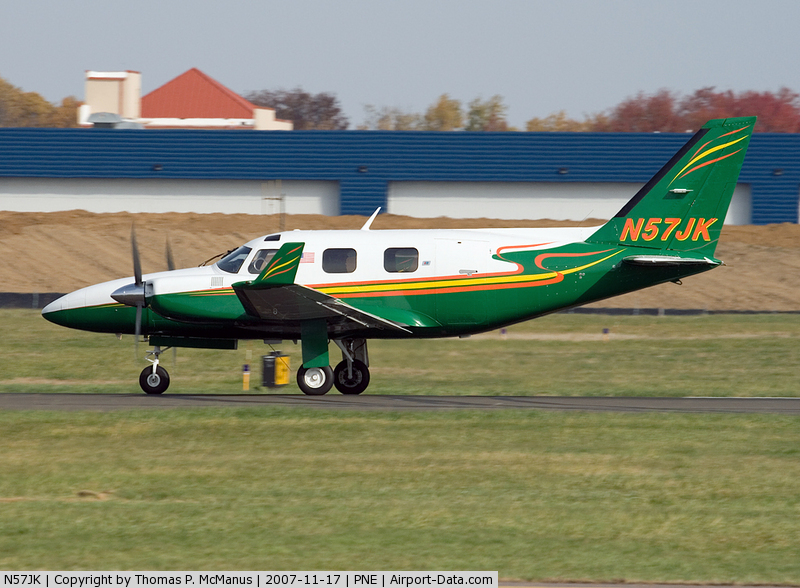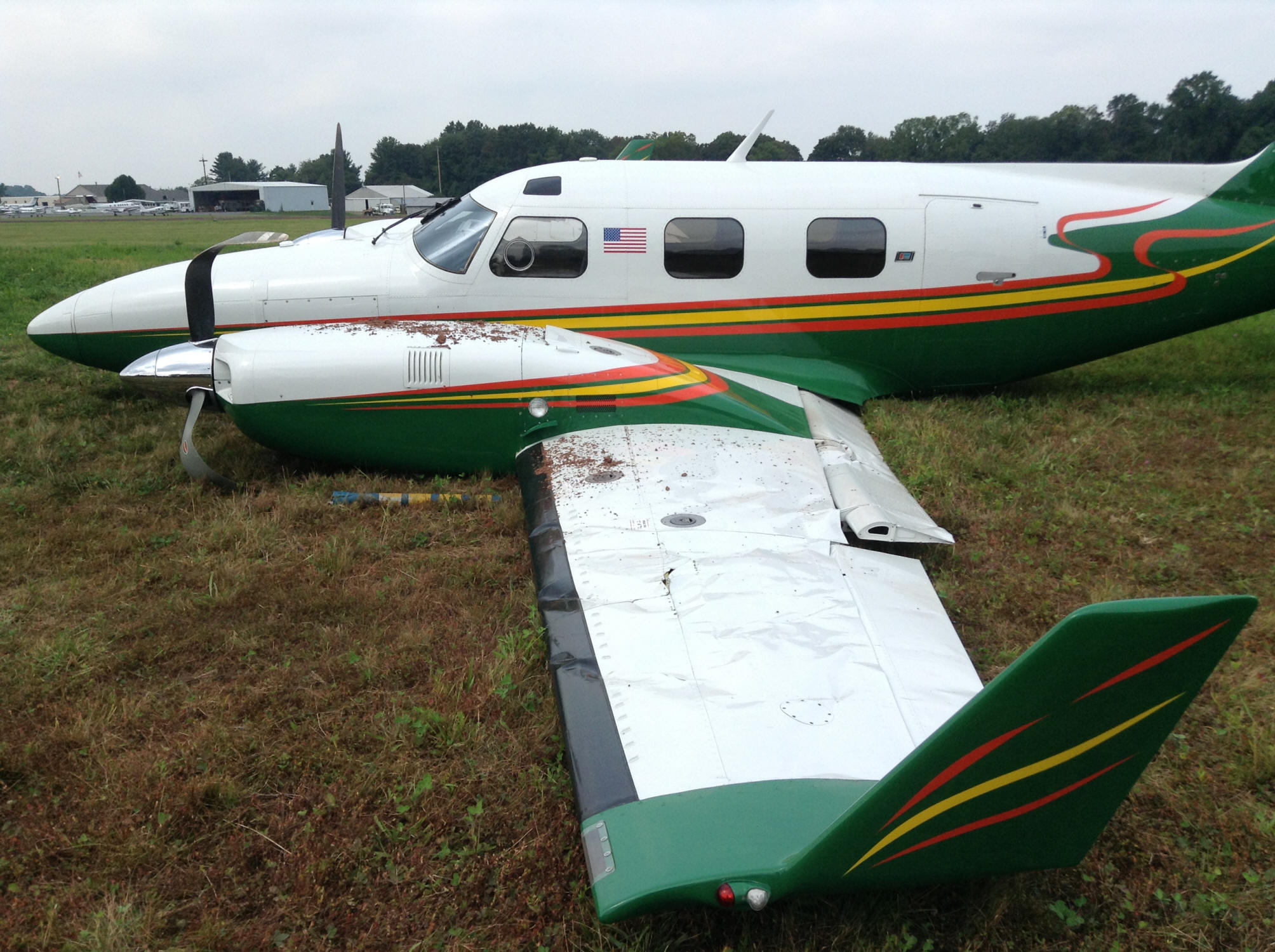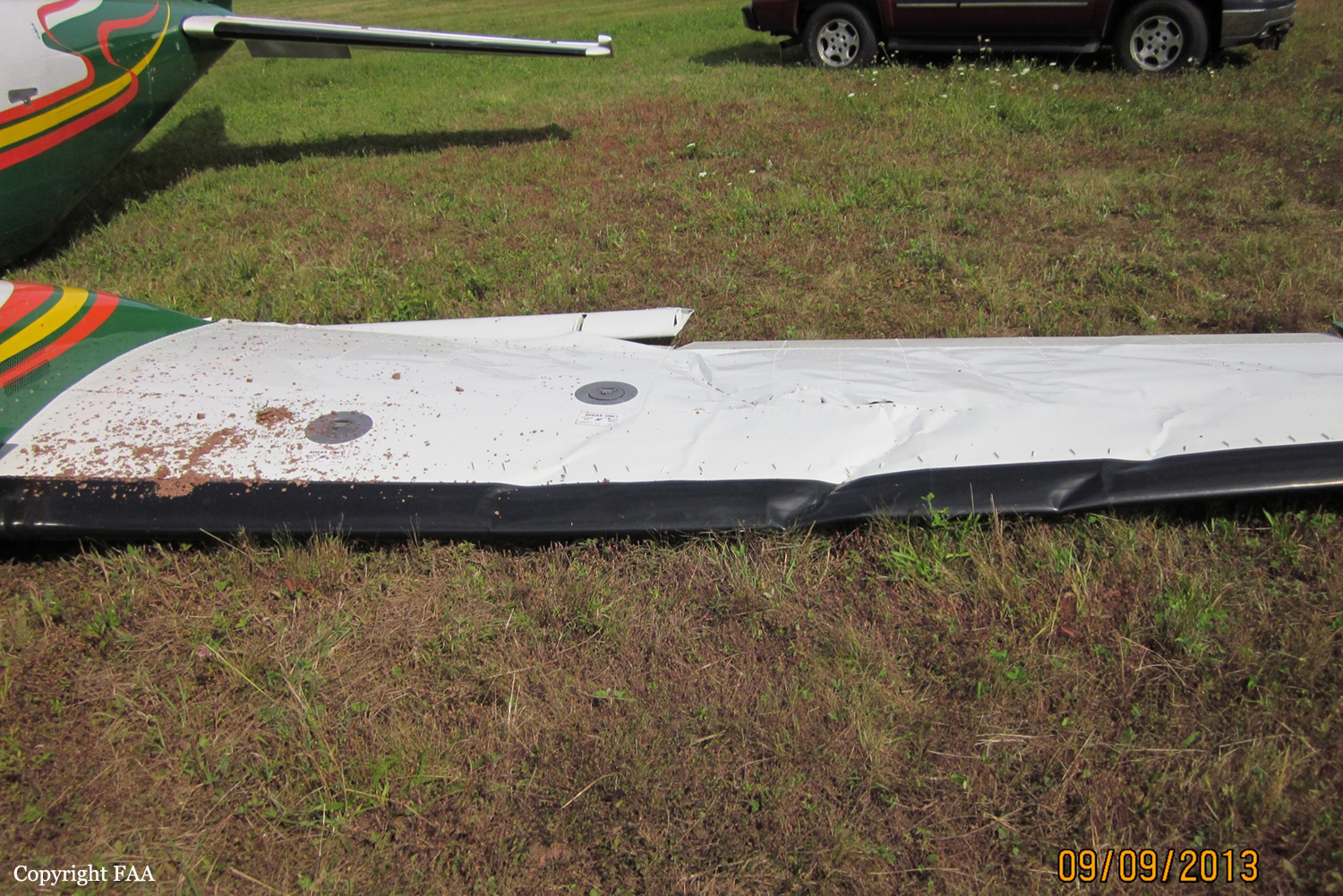Crash of a Piper PA-31P Pressurized Navajo in Doylestown
Date & Time:
Sep 8, 2013 at 1030 LT
Registration:
N57JK
Survivors:
Yes
Schedule:
Cambridge - Doylestown
MSN:
31-7530020
YOM:
1975
Crew on board:
1
Crew fatalities:
Pax on board:
0
Pax fatalities:
Other fatalities:
Total fatalities:
0
Captain / Total hours on type:
1054.00
Aircraft flight hours:
3952
Circumstances:
Following a normal landing, the pilot felt no wheel braking action on the left wheel, and the brake pedal went to the floor. The pilot attempted to maintain directional control; however, the airplane departed the right side of the runway and traveled into the grass. The landing gear collapsed, and the airplane came to a stop, sustaining structural damage to the left wing spar. Postaccident examination confirmed that the left brake was inoperative and revealed a small hydraulic fluid leak at the shaft of the parking brake valve in the pressurized section of the cabin. Air likely entered the brake line at the area of the leak while the cabin was pressurized, rendering the left brake inoperative.
Probable cause:
A leaking parking brake valve, which allowed air to enter the left brake line and resulted in the eventual failure of the left wheel brake during the landing roll.
Final Report:



